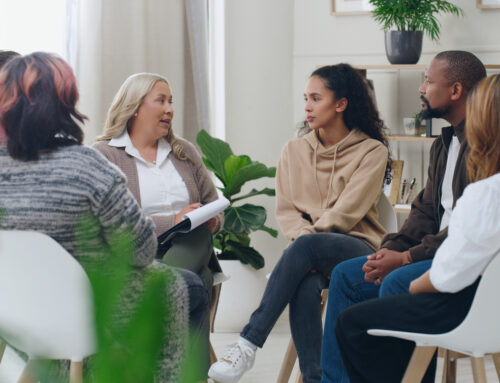(a chapter from Telling Ed No! by Cheryl Kerrigan©)
When it became clear to me that I would need to stop all Ed-based behaviors and replace them with healthy recovery based ones, I felt overwhelmed. My habits were mine! They had helped guide me and keep me safe, right? No! None of my negative behaviors were improving my life, but I knew it would be difficult to stop them all at once. Talk about stress, pressure, anxiety, and fear!
With this in mind, I began to pay more attention to what I was doing every day, and I discovered that sometimes I wasn’t sure if a particular behavior was Ed-based or recovery-based. This made it hard to decide if I should stop it or not. To help me sort this out, I did two things. First, I made sure I was hyper vigilant about what I was doing and if a certain pattern came up, I would write it down so I wouldn’t forget it. Then, when I was done, I brought the list to Bob and we determined what was Ed- based and what wasn’t.
With Bob’s help, I was able to visit each behavior and soon began to realize that most of them were primarily Ed-based, with instructions from him on what to do, how to do it, and why. They were also based on avoidance of feelings and coping in unhealthy ways. While writing down these negative patterns and being honest about them helped me open up and gave me goals to achieve, giving them all up seemed like an overwhelming job. I was afraid and sad, yet determined to succeed.
To help deal with my anxiety and fear I came up with a plan: I would work on one behavior every three days. During those three days I would pay extra attention to what I was doing, and when one particular destructive behavior came up, I would use a variety of recovery tools to stop it. For instance, I could write in my journal, listen to music, cry, or reach out to a friend. Every time I swapped the Ed-based habit with one that was recovery-based, I felt a tremendous sense of accomplishment and pride. Then, every fourth day I would review what I had already learned—to keep it fresh and alive—and then started to work on the next Ed-based behavior. I was always pushing myself to grow. This was moving me forward!
When I put this plan into place, Ed was quite vocal. He insisted that my old habits were keeping me safe and in control, and I needed them. He would also try to convince me that I didn’t need to work so hard, that I could take a break between goals and go back to them at another, time. So I had to remain strong and continue to work on all behaviors no matter what Ed said—even if he sounded like he was trying to take care of me. I had to remember that Ed lies. He only cares about himself and his plan, not mine. And he has no place in my recovery.
Ending negative behavior patterns is key to recovery and doing so was not easy, nor did it happen all at once! But being aware and honest about them, and committing to systematically transforming them, one by one, into a positive, recovery based life gave me a compass to guide me along my road to recovery.
Reflections
Have you been able to look at your Ed-based behaviors head-on? Have you been honest about what they are? Begin to take charge by making a list of patterns you recognize. Also brainstorm with your treatment team or a loved one about any they notice. After the list is complete, commit to working on one behavior at a time for three days. When you move on to the next one, don’t forget to continue your successful work on the ones you have already faced! Over time, you will replace the Ed behaviors with healthy ones and freedom will be around the corner. You are strong. You can do this. What behavior will you stop first?
With health, hope and strength,
Cheryl






